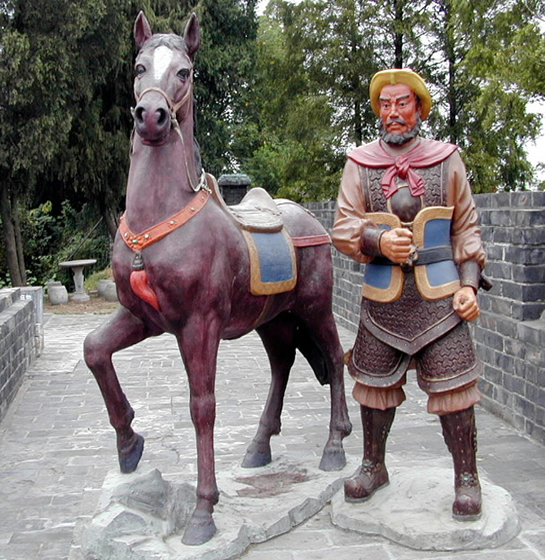
Chinaís Shanghai Region,
a Photoessay
by Lynn Rosen and Steve Giordano
Introduction: The historic town of Zhujiajio on the southern Yangtze River near Shanghai came into existence during the Ming Dynasty. It prospered in rice trading and textiles. The town is surrounded by rivers and has been called the Venice of China. Nine streets extend along its many rivers and thirty-six archaic stone bridges crisscross the rivulets inside the village. Narrow streets and alleyways coupled with ancient architecture and unusual bridges lend a charming atmosphere to this historic town.

Many walls and fortresses were built for protection against invasion and now exhibit statuary symbolizing warriors protecting each particular enclave. This is located on the ancient city wall of Jingzhou.
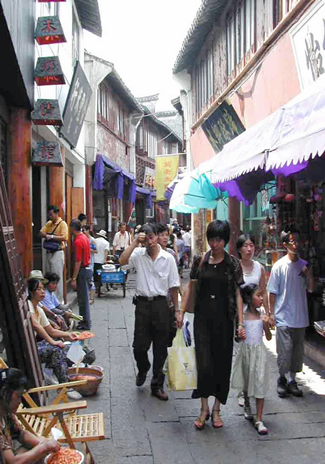
The ancient village of Jingzhou in the suburbs of Shanghai has been preserved as a world heritage Chinese treasure. Its Great North Street is an example of Ming and Qing Dynasty architecture with white walls and black tile roofs where merchants, shoppers and tourists now mingle and buy their wares.
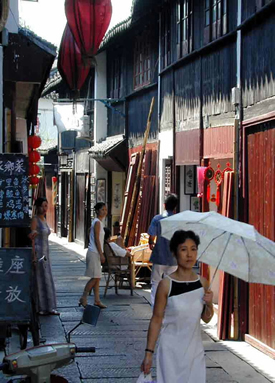
The village sprawls off into many side streets with more homes, shops and tourists.
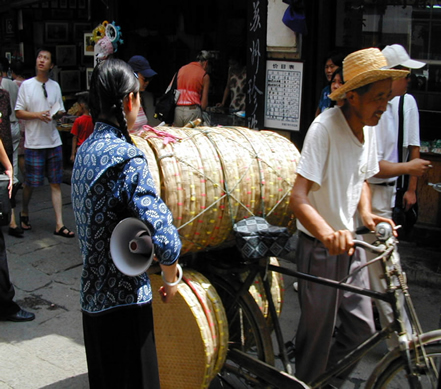
As there are no cars allowed inside this ancient village, merchants carry their inventory aboard bikes through the narrow streets. A tour guide equipped with bullhorn waits for her group.
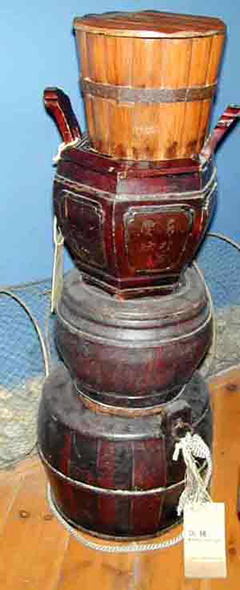
This stoneware and pottery was used by people 4,000-6,000 years ago in the Shanghai regions.
Since the 1950s, 18 ruins of the primitive New Stone Age in Qingpu, Songjiang, Fengxian and Jinshan have been excavated. A lot of stone ware, jade ware, pottery ware, bone ware and other rare relics were discovered, revealing the brilliant ancient culture that the primitive inhabitants in the Shanghai area had created.
According to the results of C14 dating, the Majiabang culture in Shanghai area dates back 6,000. The Songze culture dates back 5,000-6,000 years. As well as the Huanghe Valley, the Changjiang Valley is one of the birthplaces of Chinaís Ancient culture.
The discoveries are displayed in the Shanghai Ancestor Pottery and Jade Hall.
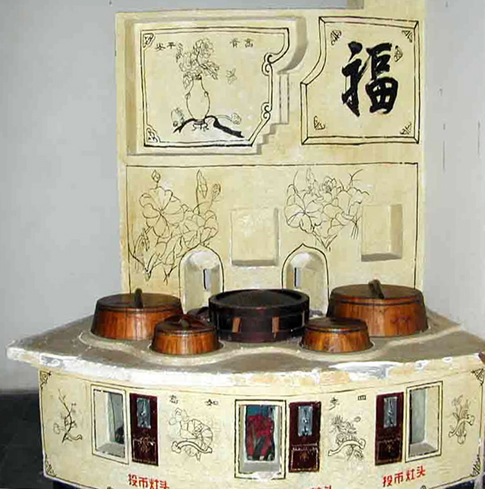
This typical clay oven and stove warmed rooms and cooked food for the household.
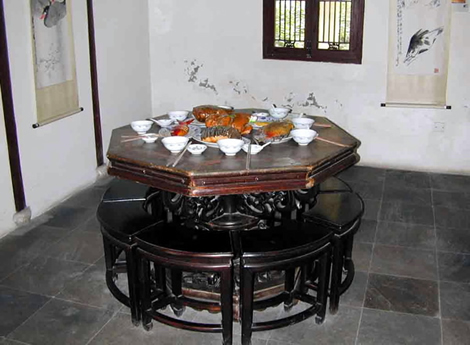
A Chinese table set today is not much different from those found in museum collections.
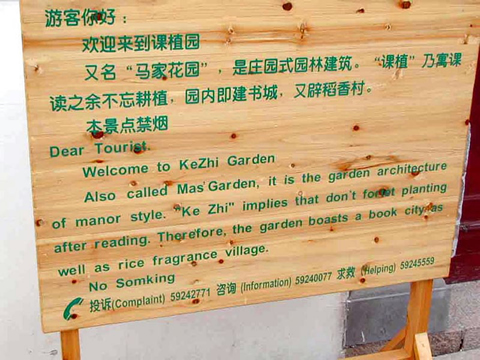
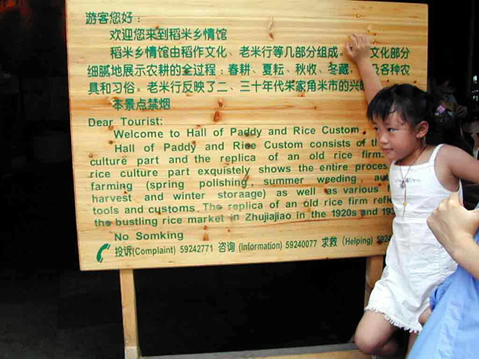
One of Jingzhouís museums, The Hall of Paddy and Rice Custom, documents the history of this regionís economic success Ö rice.
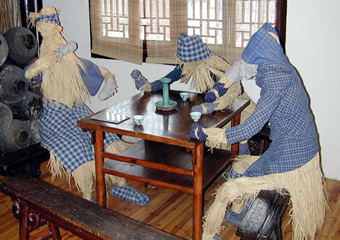
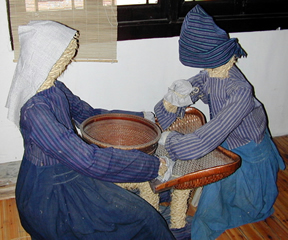
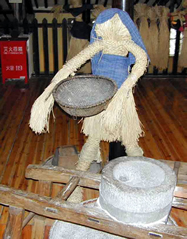
These are traditional scarecrows which were used in the rice fields to discourage infestation and interference by animals and birds.
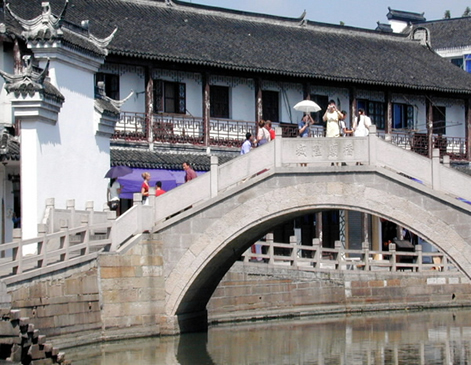
Numerous rivers crisscross Jingzhou. Nine long streets run alongside the rivers. Thirty-six ancient stone bridges, which are natural extensions of the streets, also crisscross the rivers in this preserved village.
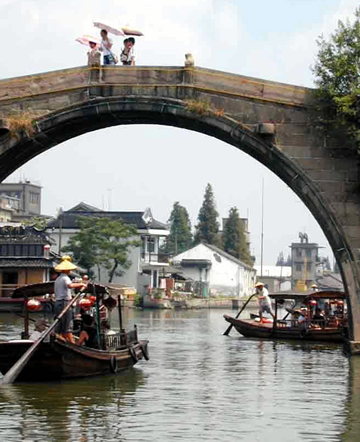
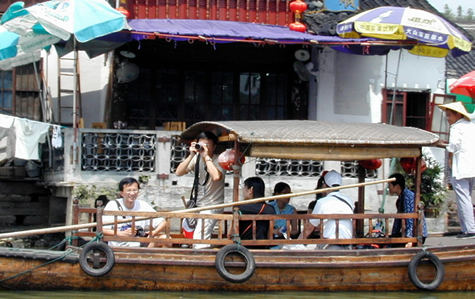
Tourists can buy tickets and float along the rivers in small local sampans between the homes and businesses.
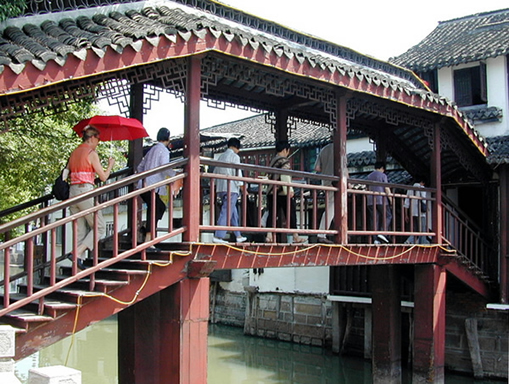
Every bridge in Jingzhou has a story. While most of them are stone, this one is unusual as itís covered with a traditional black tile roof and made of wood.
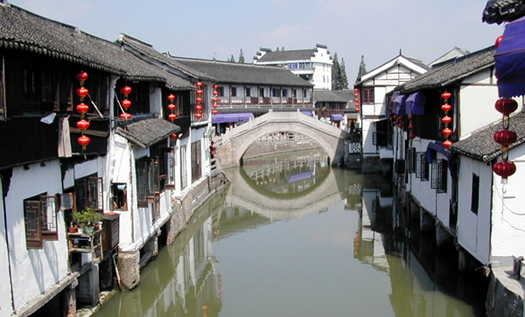
Throughout China, red lanterns signify eating establishments, even and especially on the water.